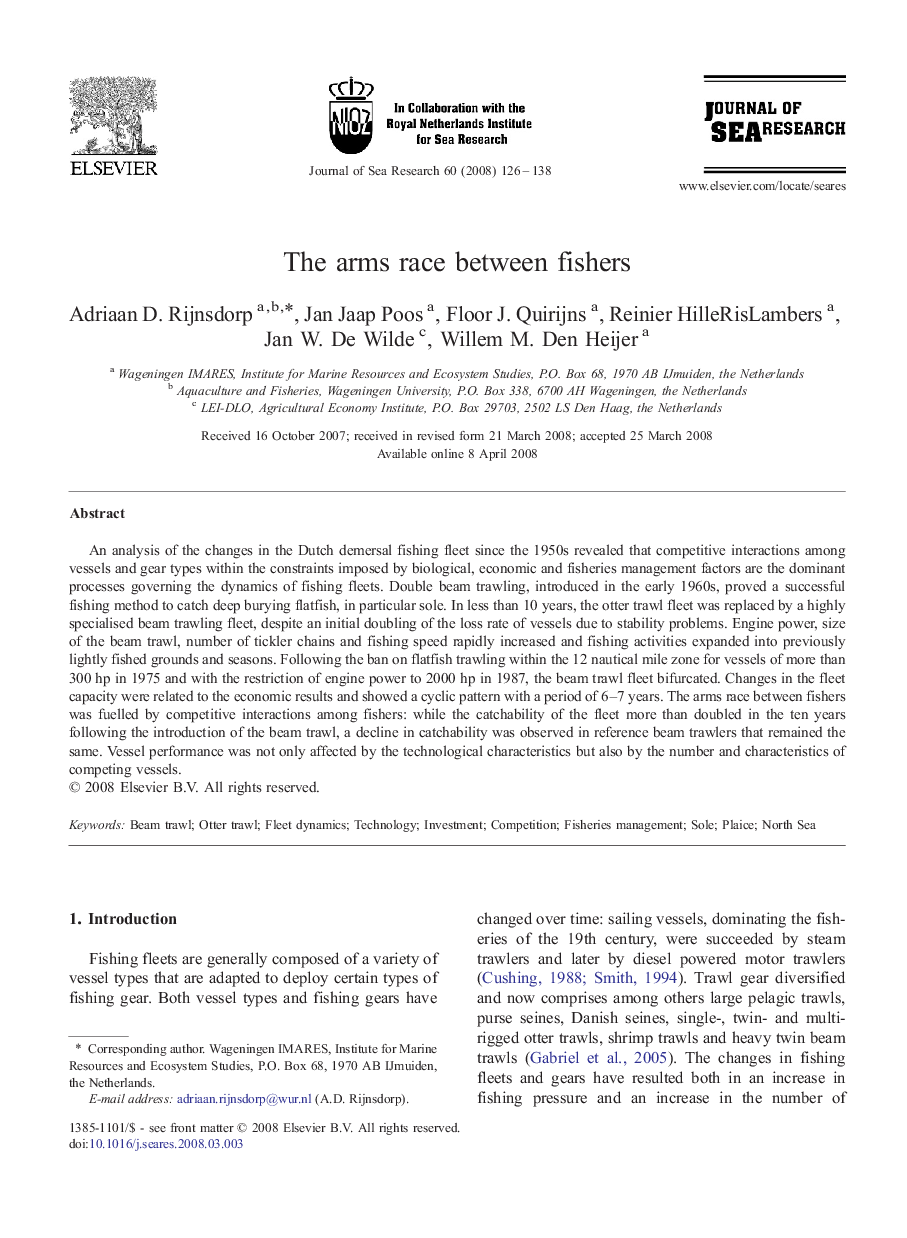| کد مقاله | کد نشریه | سال انتشار | مقاله انگلیسی | نسخه تمام متن |
|---|---|---|---|---|
| 4550345 | 1627512 | 2008 | 13 صفحه PDF | دانلود رایگان |

An analysis of the changes in the Dutch demersal fishing fleet since the 1950s revealed that competitive interactions among vessels and gear types within the constraints imposed by biological, economic and fisheries management factors are the dominant processes governing the dynamics of fishing fleets. Double beam trawling, introduced in the early 1960s, proved a successful fishing method to catch deep burying flatfish, in particular sole. In less than 10 years, the otter trawl fleet was replaced by a highly specialised beam trawling fleet, despite an initial doubling of the loss rate of vessels due to stability problems. Engine power, size of the beam trawl, number of tickler chains and fishing speed rapidly increased and fishing activities expanded into previously lightly fished grounds and seasons. Following the ban on flatfish trawling within the 12 nautical mile zone for vessels of more than 300 hp in 1975 and with the restriction of engine power to 2000 hp in 1987, the beam trawl fleet bifurcated. Changes in the fleet capacity were related to the economic results and showed a cyclic pattern with a period of 6–7 years. The arms race between fishers was fuelled by competitive interactions among fishers: while the catchability of the fleet more than doubled in the ten years following the introduction of the beam trawl, a decline in catchability was observed in reference beam trawlers that remained the same. Vessel performance was not only affected by the technological characteristics but also by the number and characteristics of competing vessels.
Journal: Journal of Sea Research - Volume 60, Issues 1–2, 2008, Pages 126–138